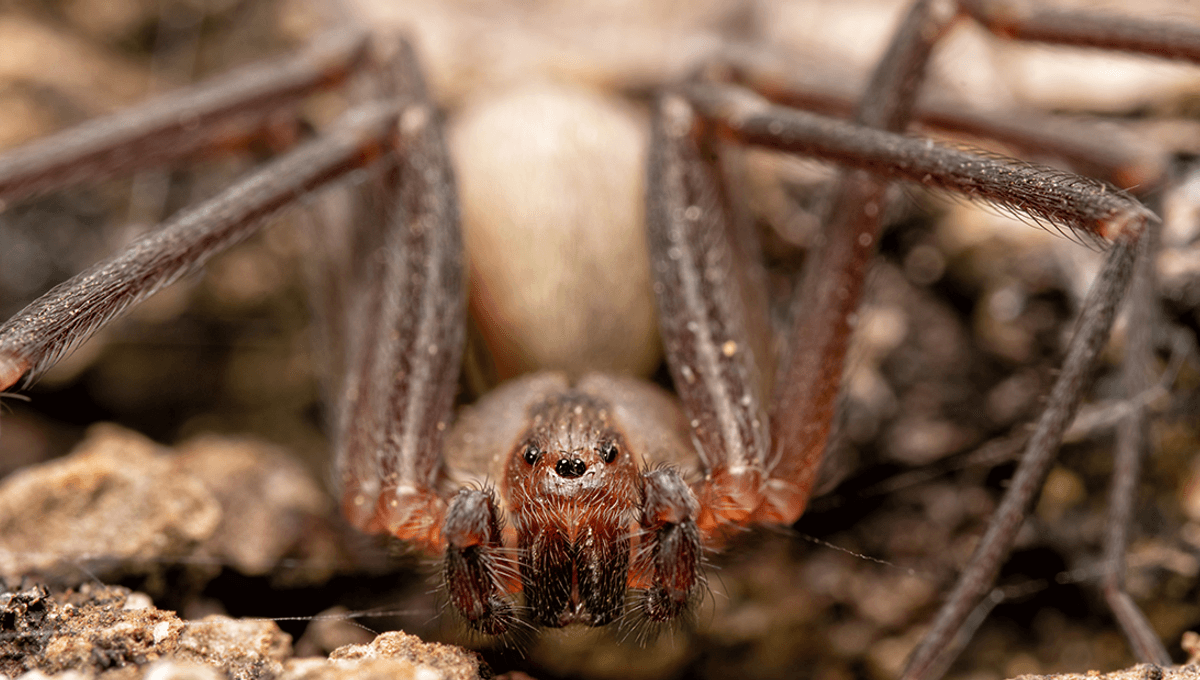
A case report details the story of a family who lived with 2,055 brown recluse spiders in their Kansas home over the course of five and a half years.
Spiders have a pretty bad reputation amongst humans for a group of species that is so good at pest control. But while most species are harmless, there are a few venomous types that you probably don’t really want in your house.
“Brown recluse are hunting spiders that wander at night in search of prey. Females make retreats in which they hide and ambush prey. A retreat consists of a mat of silk spun in a hidden location such as in a wall void or behind a picture frame,” the Illinois Department of Public Health explains of the spiders.
Once they are in your home, they can be pretty difficult to shift, spending a lot of their time hiding inside furniture and other small spaces within your house.
“They are long lived, can survive for many months without feeding, and females need mate only once to produce offspring throughout their lives,” the Illinois Department of Public Health continues. “So it takes only one, mated female to start an infestation. Once established, they are difficult to control.”
That fact is pretty well highlighted by one family, living in Kansas in a 19th-century-built home. The family, including a 13-year-old and an 8-year-old, moved into the house after the previous occupant of 20 years left in 1996. For five and a half years, they would see spiders moving around the house, but in the summer of 2001, the family finally realized that the spiders they were seeing were Loxosceles reclusa, the brown recluse.
Specimens collected by one of the study’s authors were confirmed to be the species, before the team attempted to get every spider in the house, with two people performing nightly collections from mid-June until mid-September 2001. While they attempted to collect the spiders without destroying them, “many spiders were destructively sampled to prevent escape”. But all killed spiders were logged, and plenty of samples were collected still intact.
“2,055 brown recluse spiders were collected or killed in 6 [months], 842 from sticky traps and 1,213 from manual sampling,” the team explains in their paper. “Of the 1,179 manually collected brown recluse spiders sorted into size categories, there were 323 large (27.4 percent), 255 medium (21.6 percent), and 601 small spiders (51.0 percent).”
That is a lot of large, medium, and small spiders. As the season went on, the team noticed that they were catching fewer of the larger spiders.
“The Kansas home produced an amazing number of brown recluse spiders in 6 mo of collecting. The decrease in large and medium spiders from early to late season was probably a result of the natural demographic development through the season and the removal of larger specimens that were easier to detect and capture,” the team explains. “Brown recluse spiders can live several years, so the latter reason may be more critical in explaining the proportional dwindling of the large and medium spiders.”
The team explains that the spiders are considered capable of envenomation at around 5 mm in body length, around the size of the “medium” spiders found in the house. At an estimate, they suggest that there were around 488 spiders capable of envenomation in this “highly infested home”.
While it’s probably not a great idea to live in a spider-infested home, where the spiders are venomous, the occupants of the house were completely fine.
“Despite a conservative estimate of 400 envenomation-capable brown recluses in the Kansas home (≈20 percent of the total recluses captured), no envenomations of the occupants occurred.”
The team cites a similar survey in Chile, which found hundreds of the spiders in an infested home, again with no bites to the occupants. According to the team, this may indicate that doctors – particularly in areas where spiders are not widely found – are misdiagnosing dermatological lesions as bites from the spider.
“Considering the number of brown recluse spiders found in the homes in this study without envenomation, for bite diagnoses in nonendemic recluse territory to be correct, nonendemic areas would need to support hundreds to thousands of brown recluse spiders. In contrast, in nonendemic areas, typically no brown recluse populations are known and verified finds are <10 per state>
“In nonendemic recluse areas, more proof of recluse involvement (i.e., verification of Loxosceles spiders at the specific alleged envenomation locale) should be required before the wound is attributed to brown recluse spiders.”
As well as being misdiagnosed, maligning the poor brown recluse, bites from the spider are not too serious either.
“When they do occur, bites are rarely as serious as they have been portrayed,” the Illinois Department of Public Health explains. “Some bites produce only localized redness and swelling. Severe necrosis probably occurs in less than 10 percent of cases, and may result more from bacterial infection of the wound rather than reaction to the spider’s venom.”
The paper is published in the Journal of Medical Entomology.
Source Link: What Happened When A Kansas Family Lived With 2,055 Brown Recluse Spiders For 5 And A Half Years